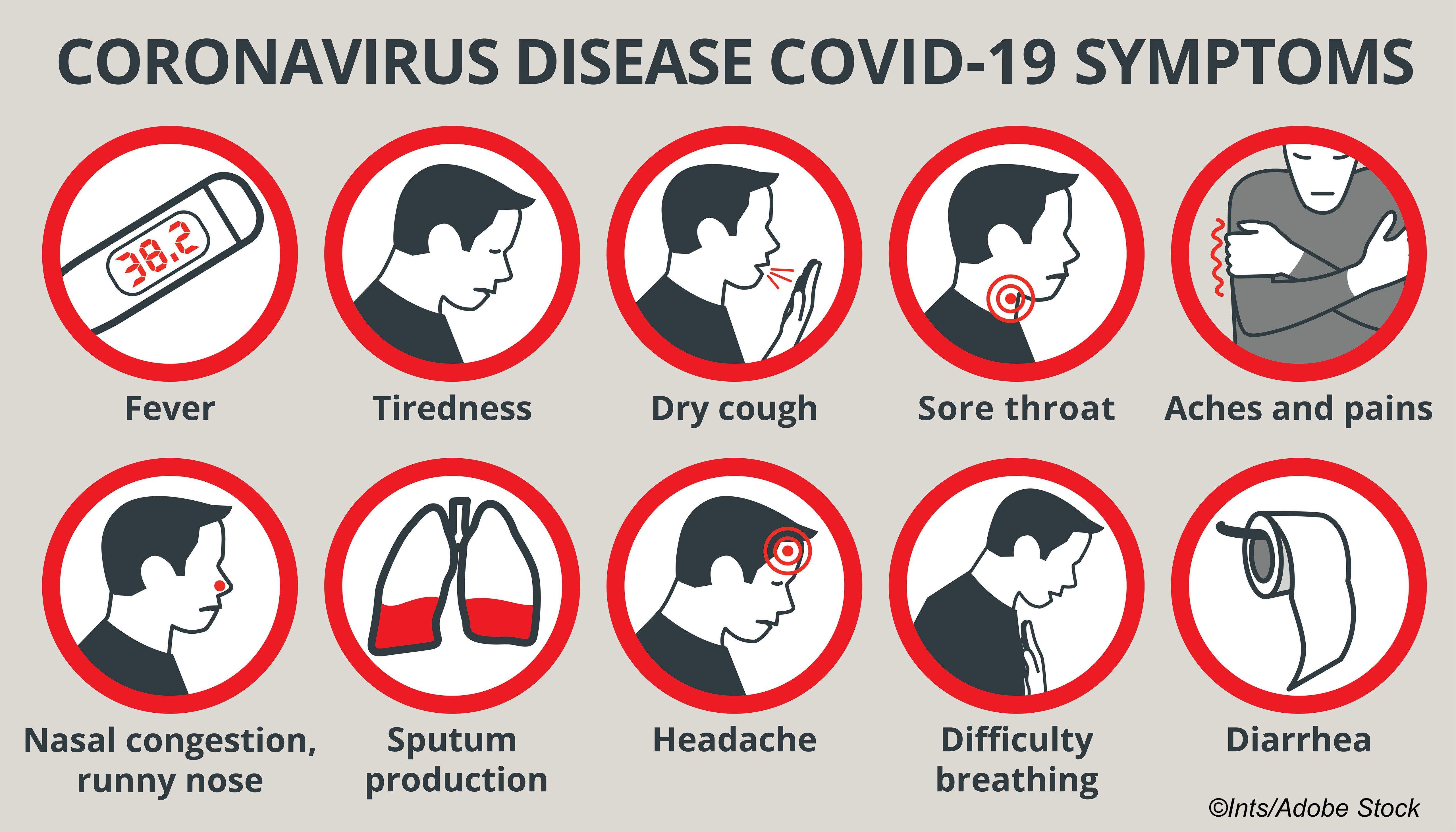
Seven common symptoms of Covid-19 were found to be predictive of SARS-CoV-2 positivity, according to results from a modeling analysis involving survey data on more than 1 million people in the United Kingdom enrolled in the REACT-1 study.
Loss or change in sense of smell, loss or change in sense of taste, fever, new persistent cough, chills, appetite loss, and muscle aches were all found to be jointly predictive of PCR-confirmed positivity in the study, with the importance of each symptom varying only slightly across age groups.
Just four of the symptoms—change in sense of smell and taste, along with fever and new persistent cough—are widely used at present in the U.K. to determine eligibility for PCR testing.
Writing in the journal PLOS Medicine, researcher Joshua Elliott, of Imperial College London, and colleagues predicted that including all 7 symptoms would increase testing eligibility around 3-fold, potentially resulting in detection of 70% to 75% of positive cases.
“Based on our findings, this (4 symptom set) is too restrictive, and in order to improve PCR positivity detection rates and consequently improve control of viral transmission via isolation measure, we would propose to extend this list of symptoms used for triage to all 7 symptoms we identified,” they wrote.
The REal Time Assessment of Community Transmission-1 (REACT-1) investigation is an ongoing series of studies conducted in the U.K. involving home antigen swab testing and antibody testing as a means of tracking the SARS-CoV-2 virus.
Each month, more than 150,000 people in the nation are randomly sent swab tests to perform at home, and every 6 weeks around 100,000 volunteers are sent finger prick lateral flow tests to track antibody positivity.
In this analysis, Elliott and colleagues used REACT-1 data from survey periods 2 to 7 (June to December 2020) to identify symptoms determined to be “jointly predictive of SARS -CV-2 positivity and, assess their performance among holdout community population-based data from rounds 2 to 7 and, separately, round 8 (January 2021).”
“We aimed to identify a parsimonious set of symptoms that jointly predict Covid-19 and whether predictive symptoms differ between the B.1.1.7 (Alpha) lineage (predominating as of April 2021 in the U.S., U.K., and elsewhere) and wild type,” they added.
The analysis included data on throat and nose swabs with SARS-CoV-2 PCR test results from 1,147,370 volunteers as young as age 5 (6,450 positive cases).
“Participants were asked about symptoms occurring in the week prior to testing,” the study authors wrote. Viral genome sequencing was performed for PCR-positive samples with N-gene cycle threshold value < 34 (n = 1,079) in the eighth round 8, which occurred in January 2021.
Univariate analysis identified 26 surveyed symptoms that were associated with PCR positivity, compared with non-symptomatic people, with the 7 symptoms considered jointly and positively predictive of PCR positivity in rounds 2–7 (June to December 2020).
Modeling conducted with data from rounds 2-7 predicted PCR positivity in round 8 with area under the curve (AUC) of 0.77.
The same 7 symptoms were also jointly predictive of B.1.1.7 infection in round 8, but new persistent cough and sore throat were more predictive of infection with the Alpha variant and loss or change in sense of small was more predictive of wild type variant.
Study limitations cited by the researchers included uncertain generalizability to other settings and the necessary reliance on self-administered questionnaires.
The study data were also collected prior to the emergence of the now dominant SARS-CoV-2 Delta variant.
The researchers concluded that their findings may have “policy relevance for countries where there is limited testing capacity.”
“The use of the 7 symptoms we identified for PCR test allocation would result in 30% to 40% of symptomatic individuals in England being eligible for a test (versus 10% currently) and, if all those eligible were tested, would result in the detection of 70% to 75% of the positive cases,” Elliott and colleagues wrote.
“Further extending the list of symptoms for test allocation would increase the number of tests performed (up to 3-fold) and potentially result in a 100% positive detection rate if all symptomatic individuals were tested, but with increasing prevalence rates would exceed testing capacity. We believe that our approach, relying on these 7 symptoms, provides a reasonable balance between number of tests performed and detection rates in England, but alternative approaches could be envisaged depending on national population size, composition, and resources.”
-
Seven common symptoms of Covid-19 were found to be predictive of SARS-CoV-2 positivity in a modeling analysis involving survey data on more than 1 million people in the United Kingdom.
-
Loss or change in sense of smell, loss or change in sense of taste, fever, new persistent cough, chills, appetite loss and muscle aches were all found to be jointly predictive of PCR-confirmed positivity in the study, with the importance of each symptom varying only slightly across age groups.
Salynn Boyles, Contributing Writer, BreakingMED™
This research was funded by the Department of Health and Social Care England, Cancer Research UK, Imperial College NHS Trust and others.
Cat ID: 190
Topic ID: 79,190,730,933,190,926,192,927,151,928,925,934


